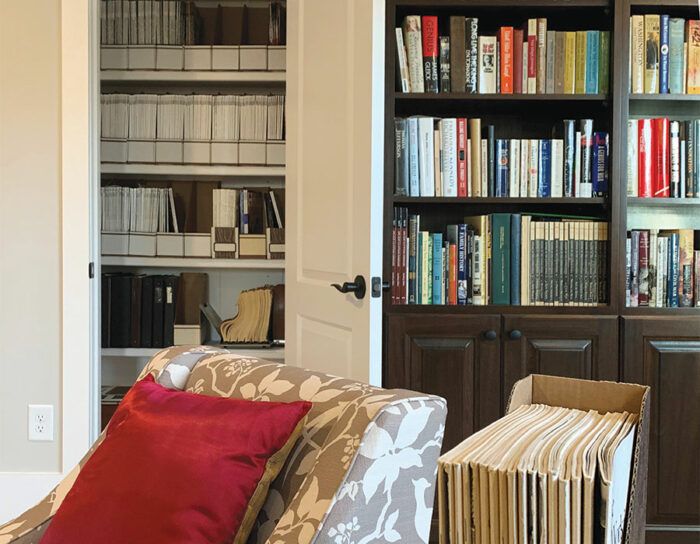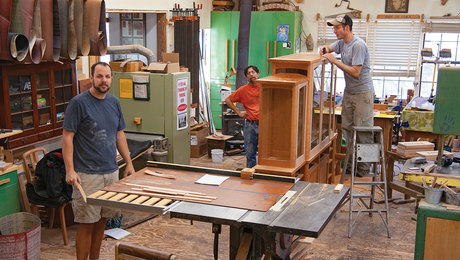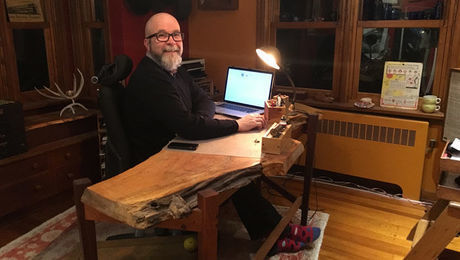Bimonthly mentor
From his first cabinetry job to his own business, Carl Spencer has not been alone. He's had a mentor by his side—his collection of woodworking magazines.
In the 1970s I worked in a cabinet factory for three years and then started my own little custom stereo cabinetry shop. When I saw Fine Woodworking for the first time, I was in my hardwood lumber supplier’s showroom: Issue #12, September 1978, the Greene and Greene issue. I could not know at that time how the parallel development of this periodical would intersect my life, again and again. I was just happy to discover a professional woodworking resource full of in-depth, useful information emphasizing principles of the trade and highlighting impressive workmanship, not yet another planter or doll bed for a homeowner to build over the weekend. I immediately subscribed.
I was highly motivated by what I read about the successes of others. Bruce Hoadley and Tage Frid taught me wood technology and engineering via their articles and books. James Krenov and Sam Maloof taught me design. Their styles weren’t always what my customers asked for or what I wanted to build, but they expanded and influenced my understanding of proportions and the importance of balance and details in design. These experts also inspired me to pass along special knowledge of my own in the form of a dozen magazine articles I wrote, in several publications, even including Fine Woodworking (“Stereo Equipment Cabinets” in #34), and a moderately successful book on the same subject.
My business failed anyway. Somewhere along the way, I missed the importance of how to successfully balance volume and costs with prices and revenues. After that, leveraging my writing and technical prowess, I dove into the corporate world where I remained for the next 21 years, developing my business skills and earning an MBA.
But although I wound up in big business, somehow I was always destined for the world of woodworking. For one Fortune 500 company I ran a cabinet door plant. For another I was general manager of a large kitchen cabinet plant. Later, I was operations manager for several plants. My Fine Woodworking subscription followed me throughout my career; so far, issues have been delivered to at least 12 different home addresses.
In the meantime, the magazine continued to develop: the first perfect-bound issue (#37), the first issue with a smattering of color (#43), and the first with new page dimensions (#117). Layouts with large blocks of text and a few black-and-white photos transformed into less text, but more color photos with detailed captions. Over the last 45 years, I have seen articles covering subjects presented in the past, but always with a new angle.
Eighteen years ago, my wife Dottie and I started our own kitchen cabinet company, and this one was a success. I was responsible for engineering, production, and business management, while she designed kitchens, baths, closets, offices, and libraries. Two years ago, when we sold our business and retired to our new home, Dottie designed sapele bookcases for our library and I built the doors and wainscot end panels.
Later, Dottie suggested that I fit out the closet space next to our library cabinets to store my periodical collection. Since my magazine storage is somewhat dynamic, changing from time to time based on my interests and professional needs, I used an adjustable shelf system.
My 45-year collection of Fine Woodworking issues adorns the entire top shelf and half of the next shelf down. Other publications cover the remaining shelves, but I only keep a few years of these, adding an issue to the new end while discarding the oldest issue. I have written articles for most of these publications and use my collections to research similar articles in past issues or competitive publications.
Yes, all this information is usually available on DVD or thumb drive, and I actually have those, too. I mostly use the new technology to locate specific topics or issues, then I go and pull out the actual issues. I find it much easier to comprehend how past articles are laid out and presented to the readers with a physical magazine on my desk. Plus, I get a kick out of reading the original articles all over again. They age well.
The last page of any recent issue of Fine Woodworking is typically a story of a person or chain of events that mentored or influenced a career in woodworking. In my case, the dominant influence has always been this magazine itself.
—Carl W. Spencer is a cabinetmaker and freelance writer in Nolensville, Tenn.
Photo: courtesy of Carl W. Spencer
Fine Woodworking Recommended Products

Blum Drawer Front Adjuster Marking Template

























Log in or create an account to post a comment.
Sign up Log in